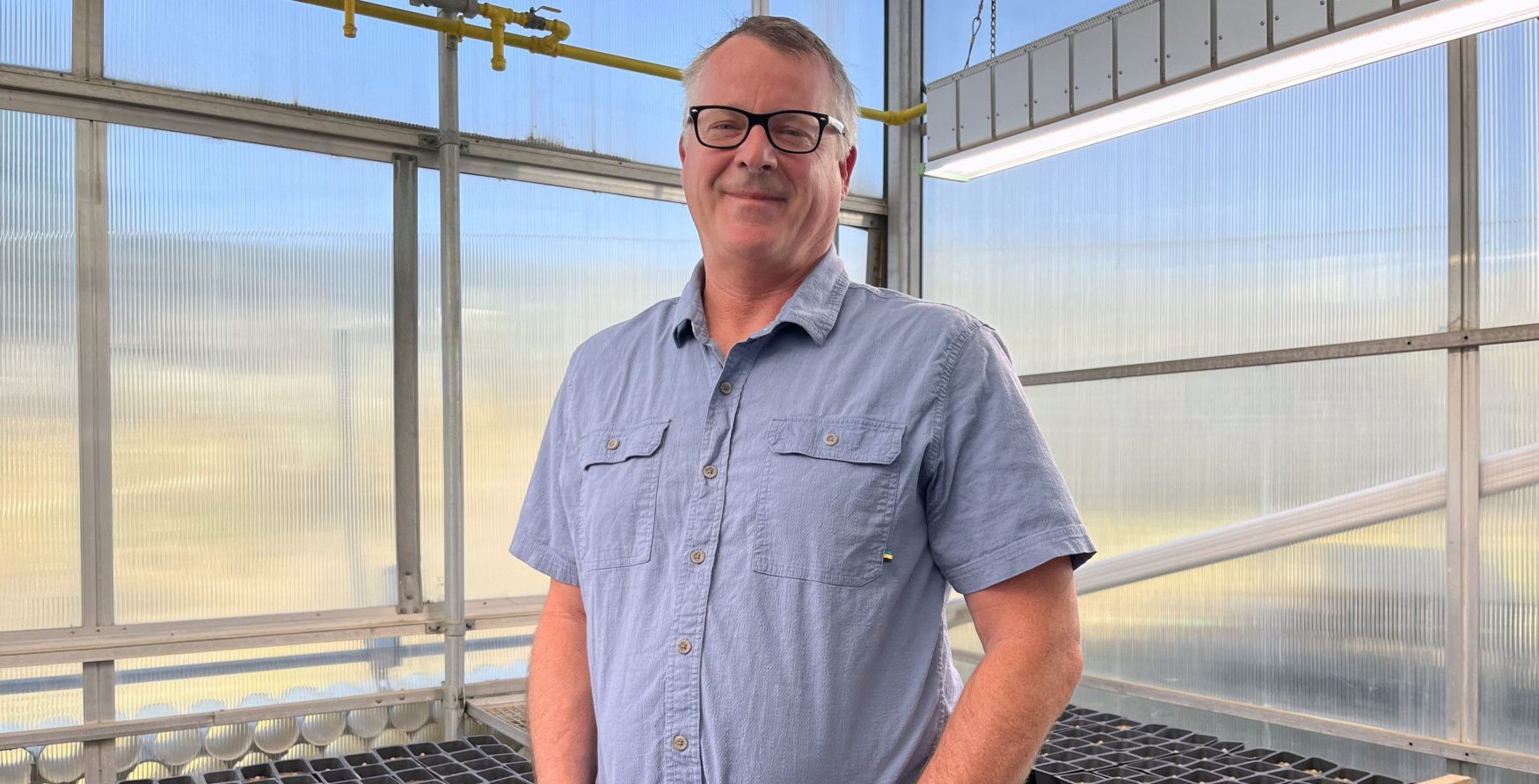
Seedpods and drones: The future of forest reclamation
By Michelle Pugle
British Columbia is experiencing greater wildfires today than ever before in recorded history. This increased wildfire activity has amplified the demand for safer, more effective recovery methods. Innovating approaches to tree planting and post-wildfire reclamation is vital for the future of BC’s landscape.
“When you think about British Columbia, you think about forests. Forestry has been king in our province for centuries. It’s part of our identity,” says Dr. Lauchlan Fraser, core researcher at TRU’s Institute for Wildfire Science, Adaptation and Resiliency, professor in the department of Natural Resource Science and NSERC Industrial Research Chair in ecosystem reclamation.
“We’re trying to regrow forests quickly while also experiencing one of the greatest threats currently known, which is climate change,” he says.
When academia meets industry, innovation happens
Fraser’s current research project focuses on optimizing tree seedpod performance to quickly restore ecosystems disturbed by wildfire. His research team consists of post-doctoral students Ghassen Chaieb and Armin Oskoueian, as well as undergraduate research assistants and research associates. So, how exactly are they going to address the need for innovative approaches to post-wildfire reclamation? The answer lies in bringing together academia and industry — and seedpods and drones.
“Academia and industry can work together to solve problems,” says Fraser. His team is now collaborating with Tree Track Intelligence, a Port Coquitlam-based company on a mission to plant 100 million trees by 2028 with the help of ground-breaking drone technology and, you guessed it, seedpods. The project, funded through a Mitacs grants, has impact beyond the scope of Kamloops, too.
“The pilot trials we’ve started with Tree Track are closer to the Merritt area, but there are also trials on Vancouver Island and there’s a lot of interest in working in many other areas in BC with a strong desire to work with Indigenous communities,” he says.
Using drones to reclaim forests
The research is still underway, but the benefits of using drone technology in wildfire reclamation could be game changing with respect to recovery speed and safety.
“After a wildfire, there are standing dead trees. It’s dangerous going into recently burned areas. It’s a safety concern sending a group of tree planters there. You really can’t,” says Fraser. But you can send drones.
“That’s the real benefit of using drone technology to distribute seedpods in a safe manner,” he says.
Benefits also include gaining access to remote areas that otherwise may never be replanted.
“If we go to the traditional method of planting seedlings, you can’t often get to that site that needs to be planted for some time. It could be one year; it could be several years. During that time, that land is not vegetated, meaning it can be exposed to water run off, available nutrients that are flushed by a fire are washed out of the system, and other non-desirable plants can invade that landscape,” he says.
Fraser says drones can get in quickly and distribute a set of tree seedlings that are designed specifically for the area. “It’s not going to replace tree planting because that’s important as well, but this does have the potential to increase areas reached and safety,” he says.
What’s in a seedpod?
The heart of this project also lies in seedpods, but not just any seedpods. These cost-effective seedpods are strategically designed with capacity to be deployed by drones in remote, inaccessible and dangerous areas affected by wildfire. Fraser’s team is busy conducting rigorous testing to refine seedpod mass production methods and effectively:
- elevate on-field germination rates from 20 to 60 per cent;
- reduce seed germination time from two months to 20 days;
- reduce seedpod mortality rates from 30 per cent to less than five per cent.
They are also targeting certain plant communities in their seedpod development.
“We don’t just want any vegetation recovery; we want to ensure we have native plants species that are local to the environment and important for Indigenous communities,” says Fraser.
Reclaiming forests in the future
“We’re also working toward some pest deterrents, because these seeds are attractive to rodents and other animals that like seeds. We’re hoping to show this reclamation technique is effective, that we can ramp up production of seedpods and distribute to larger areas, and capture those burned areas more quickly,” he adds.
In the meantime, there are hundreds of seedpods in the Research Greenhouse at TRU’s Kamloops campus that are resting atop different soil ecosystems that replicate post-wildfire burn conditions.
“We’ll monitor the seedpods over the following months to understand success, or lack of success, in germination. With this info, we can get a handle on what works best for improving quality,” says Fraser.
The team has already conducted a field test to see how the seedpods are distributed and to better understand how to track their distribution. Next, more time and energy will be spent in the field tracking seedpods as they’re deployed, marking their landings and assessing the local vicinity of the seedpod environment. While the project is set for two years, Fraser says there’s potential to continue the work.
“The great thing about research is that it always brings up new questions, and there’s often unique and different ways we can approach these problems. And it brings up more opportunities for student involvement,” he says.
